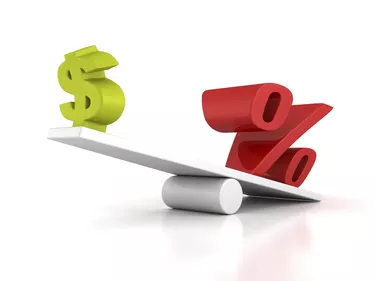
If you own stocks, bonds or other securities, you can measure how actively you buy and sell by calculating portfolio turnover, which is the ratio of purchases or sales to average portfolio size. This statistic is important, because a high turnover ratio can increase your transaction costs and possibly your tax bill. If you buy mutual funds, the portfolio turnover indicates how aggressively the fund manager trades and, therefore, how much you can expect to pay in fund expenses.
Step 1
Calculate your average portfolio size. For a given period, add the beginning and ending value of your portfolio, then divide the number by two. For example, suppose you want to calculate a monthly turnover in which the value is $22,000 on April 1 and $22,900 on April 30. The average portfolio size is $22,000 plus $22,900 divided by 2, or $22,450.
Video of the Day
Step 2
Figure your purchases for the period. Add together the amounts you spent during the period to buy securities. Say, for this example, that you spent $2,000.
Step 3
Add up the total value of securities you sold during the period. For example, you might have sold $1,400 of securities in April.
Step 4
Divide the lesser of purchases and sales by the average portfolio value. In this example, you bought more than you sold, so divide the sold amount, $1,400, by the average value, $22,450. The result, 6.24 percent, is your monthly portfolio turnover. You can figure weekly or annual portfolio turnover in a similar way.
Tip
When comparing mutual funds, you can evaluate the portfolio turnover ratio to get an idea of how much you'll spend in trading fees. Funds often charge these fees in addition to other management and sales expenses. You can then decide what benefit, if any, you will receive from a fund with a high turnover rate.
Warning
When portfolio assets are sold for a profit, it creates a tax liability. Mutual funds pass portfolio capital gains taxes through to investors each year. If you purchase a tax-managed fund, such as an index fund, the portfolio manager minimizes turnover, capital gains and taxes. Conversely, it's also possible for a manager to "churn" a portfolio simply to increase fees.
Video of the Day